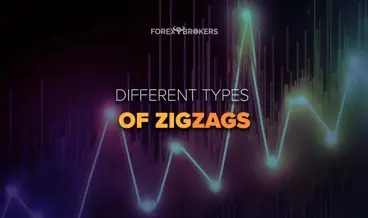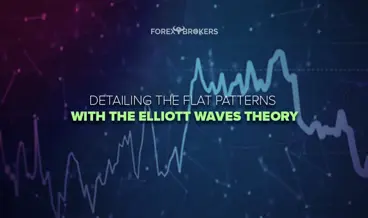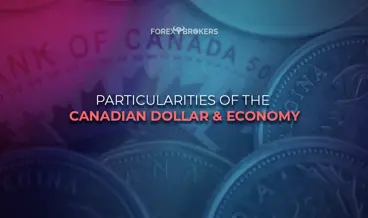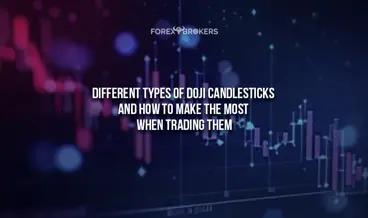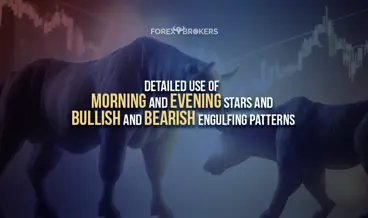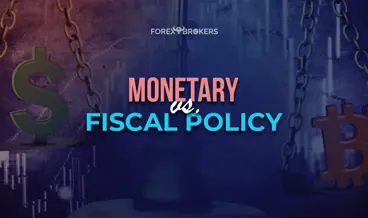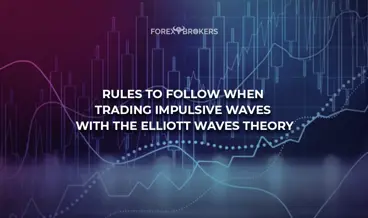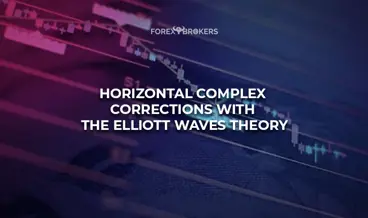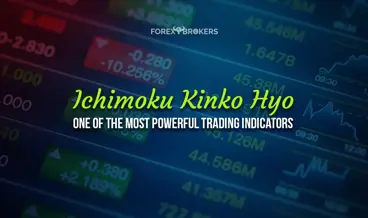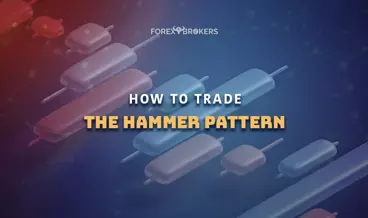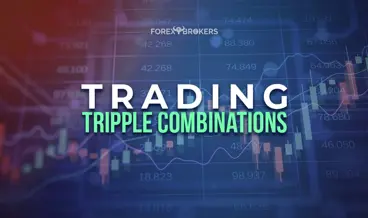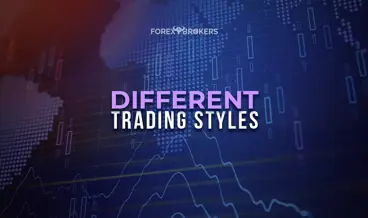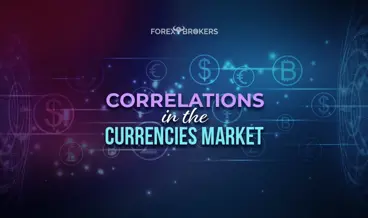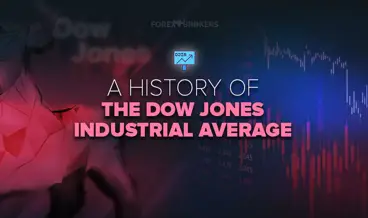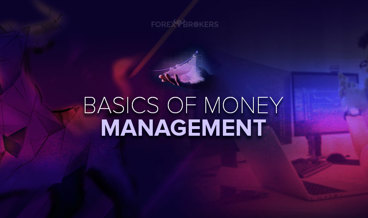When it comes to trading, there are many ways of approaching it. One should consider many factors, some obvious, some to discover after the trading journey starts.
Technological advances have made it possible for traders to use automatic trading. For example, one can build a trading robot (an EA – Expert Advisor) and attach it to a currency pair. Based on the underlying strategy, the robot will execute the buying and selling orders, closing and opening, and place pending orders, too.
Psychology plays a crucial role in defining the trading style and expectations of the currency market. Patient traders would favor swing trading (leaving trades open to reach the target for a longer time) to scalping (short-term oriented trading).
The time available to trade also defines the trading strategy. If you have only a couple of hours a day after your regular job, the trading style adapts to when the market might move rather than short-term trading. For instance, the currency market is mostly active during the London and North American sessions, so Asian traders either scalp on exceedingly small timeframes (1-min, 5-min) or swing trade on bigger ones, using pending orders for their trades.
The type of analysis is important, too. Some traders only consider historical data to forecast future price action. It is said that they use technical analysis – the art of forecasting future price action on the right side of the chart based on what happened on the left side. On the other hand, fundamental traders base their entries and exits on economic news and other macroeconomic data that cause the currency market to change. Finally, the trader may decide to trade at the market (buying or selling from the current ask and bid prices) or use pending orders.
When Can You Trade Forex?
Unlike any other market, the foreign exchange never stops. Yes, the market is closed over the weekend, but events happening over the weekend impact the opening prices on Monday. From this perspective, the forex market is a 24/7 market, in the sense that weekend surprises create gaps on the Monday opening and no stop-loss order can protect against a gap.
Future topics of this trading program will cover aspects regarding money management rules and the strategies used by traders to protect the trading account. At this point, it is worth mentioning that any trade should have a stop-loss and a take-profit order. While most of the time they do their intended job (i.e., getting the trader out of a position), they will not protect a position if a weekend gap forms. Because of that, active traders call the forex market a 24/7 market.
Trading, though, effectively stops on Friday evening after the North American session and begins on the following Monday when the Asian session starts.
Some say that the currency market follows the sun –for good reason. Trading starts in Asia, as the sun shines, and as the day advances, more markets open and others close. By the time the European session starts, the American one is not open and the Asian one prepares to close its trading day.
But the market continues to be active, the bid and ask prices continue to change despite the fact that some financial centers may have closed. So, how do traders cope with an active market during their nighttime?
Here is where the trading style kicks in. We have already mentioned scalping, swing trading and investing as the three major trading styles. Also, manual and automated trading help us further differentiate between different trading styles.
Some traders prefer automated strategies so they can always be active on the market – regardless of the trading session and the time zone they leave. Others prefer investing and swing trading strategies to make the most of all market moves from a macroeconomic point of view.
However, all traders have a money management system that makes the most of the trading instruments available via the trading platform – pending orders, stop-loss and take-profit orders, partial or full hedging, and so on. In other words, the currency market trader is always involved, one way or another, in the market, even if they do not have an active position. Just by monitoring the market conditions, the trader is active 24/7.
24/5 Market
The currency market is, therefore, a market open 24 hours a day, five days a week. From early Monday morning in New Zealand until late in New York evening, traders and investors of all sorts try to figure out the direction of the currency market.
The non-stop trading hours during the trading week are both a blessing and a curse to currency trading – a blessing because there is always an opportunity to benefit from the market’s moves and a curse because traders cannot be active 24/5. Therefore, particularities do exist between different trading sessions.
Before going into more detail regarding the trading sessions during a trading day, consider that they reflect the various time zones as the markets open and close. Some call them the Asian, European, and American sessions. Others use the main cities in each region when referring to the trading sessions – Tokyo, London, and New York.
What is important to know is that the three trading sessions have overlapping times when traders from different time zones actively exchange currencies. Those are the most active times in the currency market and often coincide with the main fixings throughout the day.

Weekends
The currency market is closed over the weekend. But events over the weekend influence the market’s opening prices next Monday.
There are plenty of examples. Elections are the events that create most of the volatility on Monday’s opening. For example, the election of France’s President Emmanuel Macron created a gap in the EURUSD pair (and other euro pairs) that remained open for a few years. The election took place over the weekend and by the time the markets opened, the winner was already known. Macron had a pro-Europe agenda and insisted on economic reforms, something that the markets took as a positive for the euro – hence, the euro pairs gapped higher.
Another example comes from the ECB. During the 2012 Eurozone sovereign debt crisis, the euro was on the verge of collapsing. Europeans had just discovered that Greece had forged its books and the country’s finances were a mess.
Overnight, spreads widened across other European states, with Southern Europe in focus (i.e., Spain, Italy, Portugal). The ECB had to act quickly to spread the contagion.
One of the measures it took during the sovereign debt crisis was a haircut applied to banks in Cyprus. The measure announced over the weekend, sent the euro lower across the board, with the EURUSD pair gap measuring over a hundred pip points.
As mentioned earlier, a stop-loss order cannot protect the trading account in the case of a gap – the broker will close the trade when there is a market. If the market opens higher or lower due to events over the weekend, the broker will use the best price at the opening to close the trade, regardless of the stop-loss order.
The bottom line here is that while the FX market is closed for the weekend, traders should monitor economic news and any news that might affect their trade. Local news like hurricanes, floods, storms, and other natural phenomena might create gaps, too.
Asian Session
The trading week begins with the Asian session. On Monday, Asian time, or late Sunday, American time, trading starts in early New Zealand.
Liquidity is everything at the opening. As such, the spreads between the bid and ask prices are wider than normal. Also, the prices move without conviction, mostly triggered by algorithmic trading rather than manual trading.
No one wants to trade during such times. If traders must open or trade a position right on the Asian opening, they must know that these are the most unfavorable market conditions in the week. The price action is somehow more intense if there is a gap at the opening, especially if the gap forms on one of the major pairs part of the Forex dashboard (e.g., EURUSD, USDJPY, GBPUSD).
Because trading takes place early Monday morning in New Zealand while it is still Sunday in the United States, some brokers choose to reveal a so-called “Sunday candlestick” on their charts. If the broker’s servers are located in the United States, the Sunday candlestick appears on the charts. For technical traders, it is worth knowing that the Sunday candlestick only has a couple of hours, not 24 hours, as the other candlesticks appear on the daily chart.
Otherwise, the Asian session is quite slow. Most of the time, ranges dominate most currency pairs, especially on crosses, and the price action is mostly suitable for scalping rather than swing trading or investing. If swing traders or investors decide to open a position during the Asian session, they surely have a longer time horizon for the closing price than the same session.
Also, liquidity continues to be very thin in Asia, so trading large volumes tends to create slippages not seen otherwise in the other two trading sessions. Towards the end of the Asian session, early London traders start to arrive at their desks and activity picks up a bit. Also, because most institutional investors in Asia are not allowed to keep positions open overnight, they are forced to square them, creating increased volatility at the London opening.

London Session
London is, by far, the largest financial center in the world. Despite Brexit, the City of London dictates the rules in the international financial markets, and that makes the London session a special one.
The London or the European session is the most active and liquid session in a trading day. There is virtually no limitation to how much a trader can buy or sell during the London session. In fact, retail traders do not reach their volume limits in any session due to the generally small size of the retail traders' accounts.
Right after the London session begins, activity improves significantly. The price action is on the rise, and the prices change fast. During this session, important economic data from one of the largest economies in the world comes out. The eurozone economic output is second only to that of the United States.
Switzerland has a currency with strong appeal for FX traders, while the United Kingdom's currency trades aggressively, too. All these currencies are influenced by economic data in the London session, from the unemployment rate, PMIs (Purchasing Managers Index), retail sales, or interest rate changes announced by their respective central banks.
Some of the most important central banks in the world announce their interest rate decisions and hold press conferences that contribute to the increase in the market’s volatility. The European Central Bank (ECB), Bank of England (BOE), and Swiss National Bank (SNB) are just a few examples.
Towards the end of the London session, the North American session began. Most of the important economic data out of the United States is released right at the start of the American session, so both London and New York, the two most important financial centers, are open.

North American Session
London is still open when the North American or New York session starts. As mentioned earlier, most of the economic data from the United States comes out while London is open. This is no surprise as the United States has the largest economy in the world, the Federal Reserve of the United States (Fed) is the most proactive central bank, and the USD is the world's reserve currency.
Some exceptions exist – for example, the Federal Open Market Committee (FOMC) Statement is released hours after the London session ends. However, during such times, all big houses in Europe and Asia alike have offices monitoring the Fed’s decision, as the market experiences higher than usual volatility levels during such moments.
The few hours when both New York and London are actively trading are the most active hours in the currency market. Each day, trading activity increases when the two sessions overlap, with most of the volume traded in this period. It is even more intense on the last trading day of the week (i.e., Friday) or the month and even more relevant if the last trading day of the month falls on a Friday.
Typically, the liquidity begins to dry up after the London session ends. Effectively, after 16:00 GMT, the currency market’s price action slows as New York traders enter the second half of their trading day. For this reason, on Friday afternoons in Europe, towards the end of the trading day and week, it is unlikely that the market will reverse the main trends during the day because institutional traders are not active anymore, large players as well, and only retail traders are responsible for moving prices.
Automatic Trading vs. Manual Trading
Automatic trading has exploded in popularity in recent years, not only among retail traders but also among institutional investors. The rise of robots and Artificial Intelligence (AI) determined huge investments from institutional entities into so-called quant firms.
These companies hire the best talent on the market (mathematicians, programmers, PhDs from all areas, etc.) and build trading strategies run by computers. Such strategies trade for the eighth or ninth digit of an exchange rate (in comparison with the retail trader that uses the fourth digit as the pip) and are responsible for most of the daily volume registered on the currency market. They execute thousands of trades per second and create massive volatility in the FX market, especially when the market is awaiting some important news.
Retail traders quickly followed the same path. Trading platforms like the MetaTrader, the most popular retail trader, have the MetaEditor option, allowing each trader to automate a strategy. The result, called an Expert Advisor or simply an EA, takes trades day and night for as long as the market is open.
However, traders should be aware of a few aspects before deciding to use an Expert Advisor to trade the currency market. One is the fact that the EA will not take any trades if the trading platform is closed. To avoid this, traders must run the platform from a dedicated VPS – Virtual Private Server. Some brokers offer VPS services for free, but some others do not, so the VPS is an additional cost to trading.
Another thing to consider is the fact that conditions change from broker to broker. As such, some strategies may show a profit on one broker but a loss or break-even on others. The explanation comes from the server time used, as some candlesticks (periods) close earlier or later (e.g., on the 4h charts). Thus, the robot takes different trades than the original strategy intended.
Besides automatic trading, there is always the possibility to use manual trading. Manual trading refers to the trader’s active participation or involvement in the execution process. Trading is done at the market or using pending orders and has the disadvantage of requiring a lot of time spent in front of the charts to find out the perfect setup. Also, a robot may scan all the currency pairs and timeframes simultaneously without getting tired, while the trader cannot do that when using manual trading.
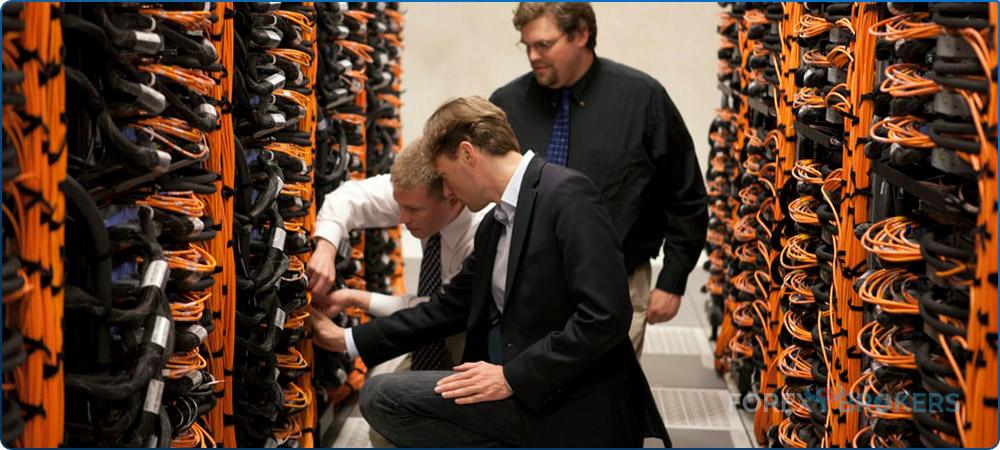
Technical vs. Fundamental Analysis
Technical analysis involves interpreting the charts to forecast future price action. Humankind has always been attracted by speculation, but the art of speculation is more than just an art.
In technical analysis, speculation on the currency market equals using indicators (trend indicators and oscillators), chart patterns (triangles, wedges, double and triple tops, etc.), trading theories (Drummond, Elliott, Gartley, Gann, Pitchfork, etc.), and much more. Most retail traders use technical analysis for their entries and exits, spending many hours in front of the charts to find bullish or bearish trends, support and resistance areas, and the tendency of a market.
Another approach to trading involves fundamental analysis. Fundamental analysis is also a vast area formed of everything that does not fit or belong to technical analysis. More precisely, think of economic news but also news of any kind that may influence the market. Geopolitical events, natural phenomena, elections, referendums – they all may move markets at one point or another, and their effect is particularly visible after the weekend as important events create gaps on the currency market.
One of the main reasons why currencies depreciate or appreciate is that the central banks make changes in the interest rate level. Higher interest rates lead to a currency’s appreciation, while lower interest rates generate a decline in the value of a currency.
Traders are well aware of the role interest rates play in the value of a currency. Therefore, a big part of the fundamental analysis process is interpreting the economic data to form an idea about what the central bank will do next about the interest rate level.
To many traders, fundamental analysis is responsible for the formation of a macroeconomic understanding of a country’s economy, and technical analysis just helps in identifying levels to enter or exit the market. All in all, the ideal market analysis involves both technical and fundamental analysis.
Scalping – Trading on the Short and Very Short Term
Also known as short-term trading, scalping can go from one pip to several pips and traders involved in such activity do not keep open positions overnight. Moreover, scalpers, as they are known, go down to the lowest possible timeframes to find their trades. Therefore, it should come as no surprise that scalpers go down to the five-minute and even the one-minute timeframe.
All scalpers are technical traders. They use manual or automated technical trading strategies to enter and exit the market.
One interesting aspect of scalping is that it appeals mostly to beginners. Traders coming in contact for the first time with the currency market are tempted to book profits amazingly fast. This results in a high number of trades in a day, and therefore, the trading journey starts with scalping.
The more the trader learns about the markets, the longer they will keep positions open. Moreover, one of the mistakes rookies make when scalping is that, while they book profits extremely fast, they fail to do the same with losses. More precisely, beginners keep their losses open far more than they keep their winners open – causing damage to the trading account as this is one of the reasons so many retail traders fail.
Those that do remain scalpers usually end up trading the market automatedly. They build robots to scan all the lower timeframes on as many currency pairs as possible and just supervise the process to make sure everything runs smoothly.
In fact, this is the main advantage of scalping. As it is mostly technical trading, the setups appear on all currency pairs, so there is always a market to trade. To take advantage of all markets, automated trading makes sense to avoid exhaustion by spending too much time in front of the trading screens.
Swing Trading – Trading with a Medium-Term Perspective
When traders keep positions open from a few hours to a few days, weeks, or even more, it is said that they are engaged in swing trading. Also called medium-term trading, swing trading involves technical and fundamental analysis, or only one.
This time, technical traders do not use the lower timeframes anymore. Instead, the analysis begins with the hourly chart and can go up to the daily timeframe. From the daily chart timeframe, the time horizon for trade increases so much that the trading style falls into the next category – investing.
Swing traders that use fundamental analysis base their trading decisions mostly on interpreting economic data. However, we should make a clear distinction here – swing trading does not mean buying or selling on economic data releases to participate in the generated market move. Instead, it means interpreting the economic data and connecting the various dots to form an idea about how an economy is performing. For example, suppose inflation falls below the central bank’s target and retail sales decline too. In that case, swing traders may decide to sell the currency on expectations that the central bank will turn dovish next time it meets and sets the interest rate level.
Traders involved in swing trading also use trading theories. While it does not make any sense to use the Elliott Waves Theory on timeframes like the five-minute chart, it does make sense to use it on the hourly timeframe. Counting waves is a popular way of identifying impulsive and corrective waves with the Elliott Waves Theory – a popular trading theory among swing traders.
The ideal swing trading style has both a technical and a fundamental component. The technical part uses either technical indicators or a trading theory (Elliott, Gartley, Pitchfork, etc.), while the fundamental analysis typically follows central banks’ decisions and their influence on the currencies’ valuation.
Investing – Having a Long-Term Perspective on a Market
Investors typically have a larger time horizon for their trades. On top of that, they have bigger resources, usually have access to better research, and have realistic expectations when it comes to the expected performance.
An investor in the currency market does not trade an exchange rate but a currency. Investing involves interpreting and putting the local economic data in the international macroeconomic picture. Once a bullish or bearish view about a currency is formed, the next step is to decide how to express that sentiment (i.e., what currency pair to buy or sell).
For instance, let us assume an investor grows bullish on the euro. It is not enough to expect a higher euro, but the next thing to consider is what currency pair to trade. The euro may rise against the dollar but may fall against commodity currencies like the Canadian dollar or remain unchanged (i.e., flat) against the Swiss franc.
If using charts, investors interpret the bigger picture. Weekly and monthly timeframes are favored, and all costs related to trading are considered. For example, if holding a long or short position in a currency pair generates a negative swap (cost related to keeping a position open overnight), investors must account for those costs as, by keeping the position open for a long time, the costs will affect the bottom line significantly.
Some trades take years to reach the take profit level and investors are not afraid of drawdowns. Depending on the execution strategy, drawdowns often represent a better way to adjust the average value of the trade by adding to the initial position.
Moreover, between the time a trade is opened and closed, fundamental conditions may change – they may favor an increase or a decrease in the original volume. It is important to remember that the investor does not just buy or sell a currency and then stop looking at it until the pair reaches the take profit. Instead, investors are active managers who often adjust their positions depending on the direction pointed out by the macroeconomic picture.
Check out our video about the Trading styles:
Conclusion
There are different ways to approach the market. Some traders prefer automated trading; thus, scalping is the favored trading style. Other traders like to use fundamental analysis and technical concepts on the bigger timeframes. For these traders, swing trading or trading with a medium-term perspective makes more sense. Finally, investors consider changes mostly on the macroeconomic level as the reason to enter or exit a market.
Money management principles should accompany the trading style regardless of the trading style. There are profitable trading strategies with all the trading styles mentioned in this article.
The trading session matters, too. For instance, the Asian trading session is known as being extremely slow. Thus, scalping on very low timeframes makes more sense than doing the same in the London session.
Gaps may result after the weekend. Many strategies are designed to trade possible gaps appearing on the FX market. They are usually swing trading strategies, as some gaps remain open for a long time.
All in all, the trading style is influenced by technical and fundamental analysis, by the trading session and also by the time available to trade. Only when considered together does the trader come to the right choice regarding a suitable trading style.




